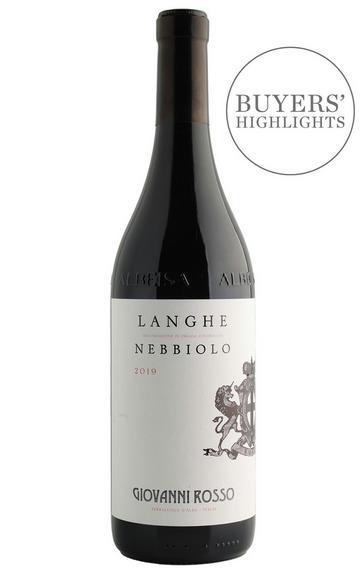
2019 Langhe Nebbiolo, Giovanni Rosso, Piedmont, Italy
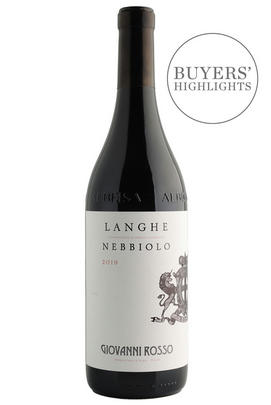
Critics reviews
Young and vibrant, this has classic varietal aromas of red berries, rose, blue flowers and tilled earth. Tense and savory, the linear palate offers wild cherry, star anise and a hint of orange zest alongside lithe tannins. Drink through 2024.
Kerin O'Keefe, winemag.com (Jan 2021)
About this WINE
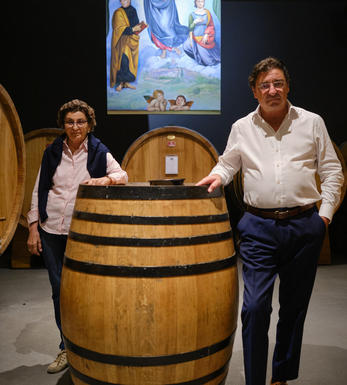
Giovanni Rosso
Davide Rosso took over from his father, Giovanni, in the early 2000s. He has since risen quickly in reputation as one of Piedmont’s greatest producers. He may not have the uninterrupted winemaking history of some of his famous neighbours, but he is the envy of many: he has some of the most desirable vineyards in Barolo – Serralunga d’Alba, Cerretta, Serra – showcasing the vivid terroir of his beloved hometown.
His range of single vineyards demonstrates his sensitivity and skill, and his pride for his hometown only magnifies the details of these crus, resulting in wines of rare class and sophistication.
Using traditional cement for fermentation with long gentle macerations, Davide’s wines are timeless, traditional and expertly crafted. His specially made French botti from the Fontainebleau forest are an indicator of Davide’s refined flamboyance. And his vineyards give him the quality of raw material to demonstrate his charm and flair.
He also crafts a small amount of wine in neighbouring Langhe and Roero and an Etna Bianco and Etna Rosso from stunning volcanic sites in Sicily.
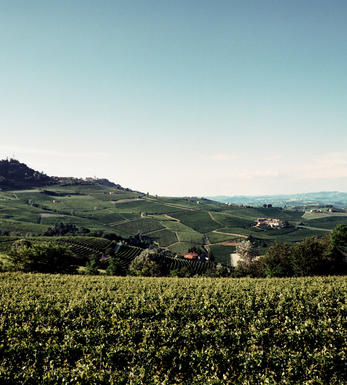
Langhe
Langhe is an all-encompassing zone lying due south of Alba and the River Tanaro in the province of Cuneo. Barolo and Barbaresco both lie within its boundaries.
Langhe is also the name of a regional DOC zone, which is used to classify wines made outside of the traditional Piemontese varietal scheme (Nebbiollo, Barbera, Cortese etc). Chardonnay and Sauvignon Blanc wines from the region are, for example, classified as Langhe DOC.
Langhe Nebbiolo
Effectively the ‘second wine’ of Piedmont’s great Barolo and Barbarescos, the Langhe Nebbiolo DOC is the only way Langhe producers can declassify their Barolo or Barbaresco fruit or wines to make an early-drinking style.
Langhe Nebbiolo can be released onto the market as soon as practicably possible either as a fresh, fruity wine made solely in stainless-steel, or later on having been aged in oak. The Langhe Nebbiolo DOC was created in 1994 along with a plethora of other Langhe DOC wines (so diluting their significance).
Unlike Nebbiolo d’Alba, Langhe Nebbiolo can be cut with 15 percent other red indigenous varieties, such as Barbera or Dolcetto. Leading, quality producers of Barolo and Barbaresco are more inclined to use 100 percent Nebbiolo, recognising its role as a stepping stone, using the fruit from vines that are either too young or poorly situated.
Larger producers tend to use the Langhe Nebbiolo DOC as a valve, declassifying wines destined for Barolo or Barbaresco when the market is difficult. Confusingly Langhe Nebbiolo can also be the declassified wine of Nebbiolo d’Alba.
Recommended producers: Giovanni Rosso di Davide Rosso , Mario Fontana , Ferdinando Principiano
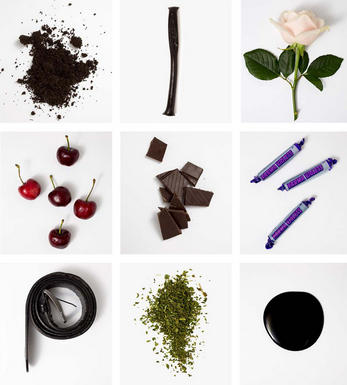
Nebbiolo
Nebbiolo is the grape behind the Barolo and Barbaresco wines and is hardly ever seen outside the confines of Piedmont. It takes its name from "nebbia" which is Italian for fog, a frequent phenomenon in the region.
A notoriously pernickety grape, it requires sheltered south-facing sites and performs best on the well-drained calcareous marls to the north and south of Alba in the DOCG zones of Barbaresco and Barolo.
Langhe Nebbiolo is effectively the ‘second wine’ of Piedmont’s great Barolo & Barbarescos. This DOC is the only way Langhe producers can declassify their Barolo or Barbaresco fruit or wines to make an early-drinking style. Unlike Nebbiolo d’Alba, Langhe Nebbiolo can be cut with 15% other red indigenous varieties, such as Barbera or Dolcetto.
Nebbiolo flowers early and ripens late, so a long hang time, producing high levels of sugar, acidity and tannins; the challenge being to harvest the fruit with these three elements ripe and in balance. The best Barolos and Barbarescos are perfumed with aromas of tar, rose, mint, chocolate, liquorice and truffles. They age brilliantly and the very best need ten years to show at their best.


Buying options
Add to wishlist
Description
This multi-site blend comes from holdings around Serralunga d’Alba and Roddino. Like Davide’s top Barolo wines, fermentation is in cement here, but maceration is shorter – retaining fruit purity, aromatics and drinkability. Six months in large oak botti give it a composed, silky sheen. There’s succulent fruit clarity, high-toned spice and floral perfume, with vibrant cherry and raspberry. Drink 2021-2030.
wine at a glance
Delivery and quality guarantee